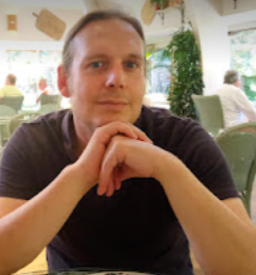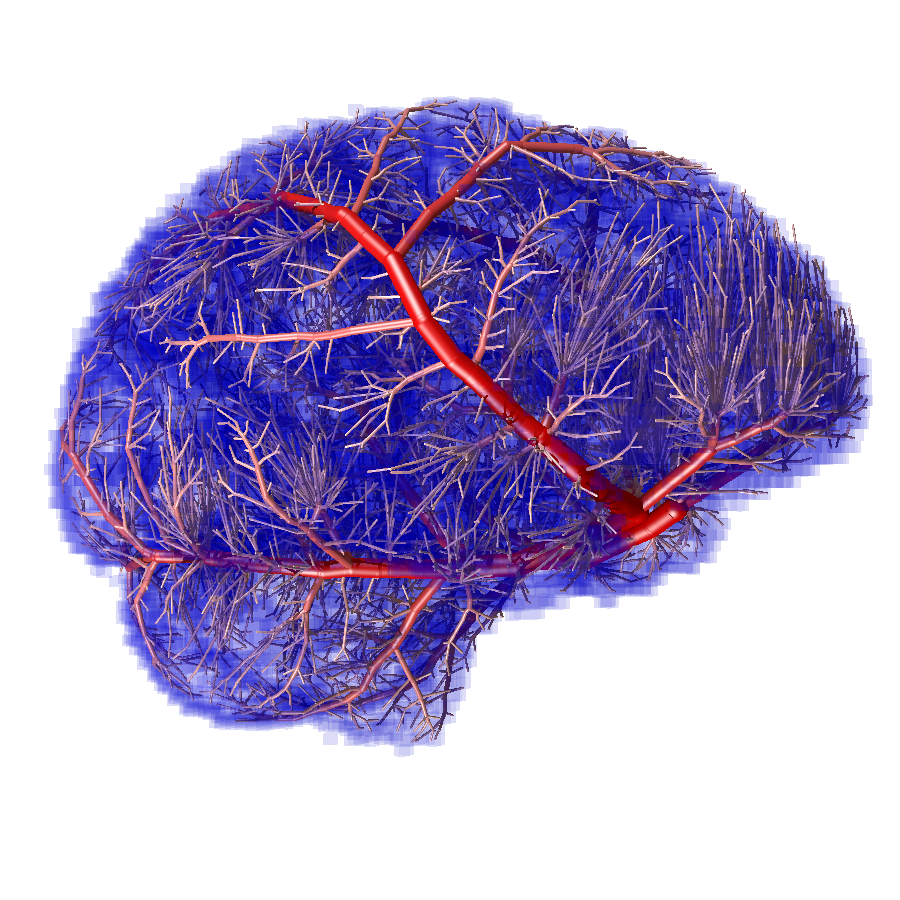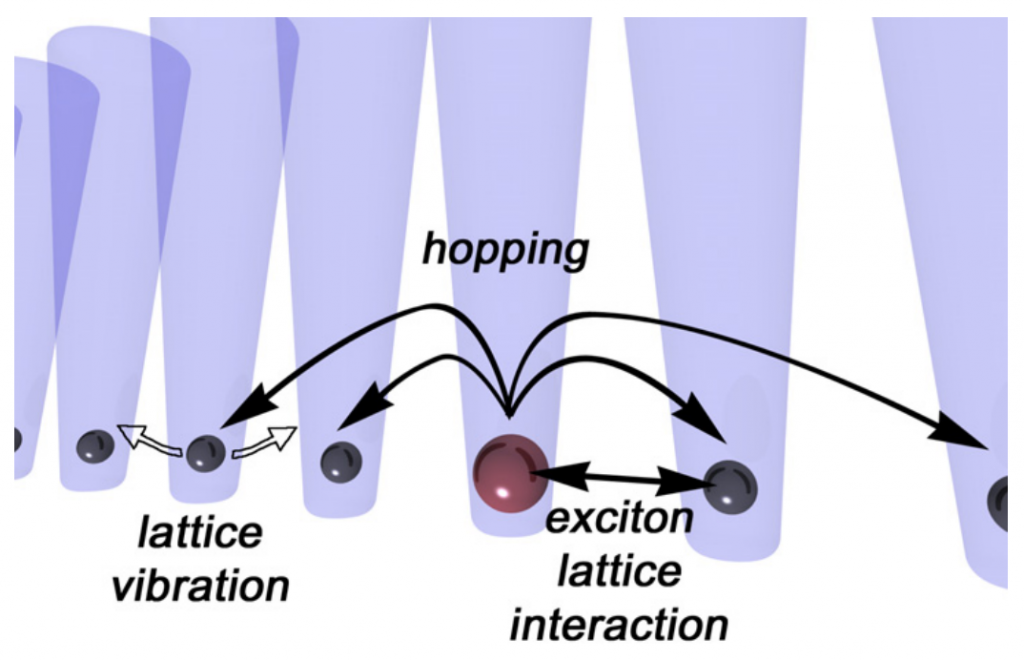
Dr Jim Hague
Senior Lecturer
Biography
Professional biography
I am a Senior Lecturer in the School of Physical Sciences with interests in quantum materials (especially superconductors), quantum simulators and biophysics / mathematical biology. Prior to joining the Open University I carried out postdoctoral research in Germany, the USA and the UK. I gained a physics degree (MPhys) from the University of Oxford, UK, followed by a PhD in theoretical physics from the University of Warwick. I have close links to the School of Life Health and Chemical Sciences, the School of Mathematics and Statistics, the School of Computing and Communications and the Knowledge Media Institute.
Research interests
I have a wide variety of research interests centred around theoretical physics and applied maths. My main acitivity is the development of new models and methods, especially the development of Monte Carlo techniques. The current themes of my main research activity are in the following areas:
Mathematical Biology / Biophysics - Cardiovascular systems and diseases. Models of living tissues.
Cultured tissues are growing in importance and have applications in pharmaceutical testing, regenerative medicine and cultured meat. My research uses physics to understand and predict the self-organisation of key components of tissues - the cells, blood vessels (vasculature) and extra-cellular matrix (the material that sits around cells and gives tissue its structure). I develop new models and techniques for predicting the structures of vasculatures and self-organisation in tissues due to interactions between cells and the extracellular matrix. I also develop mathematical models for the simulation of embolic stroke. Follow this link to my articles in The Conversation, or watch a short video here describing some of this research and our goals:
Theory of Quantum Materials - Superconductivity and graphene, especially models involving electron-phonon interactions and strong correlation.
Interactions between electrons in quantum materials lead to important phenomena such as superconductivity and magnetism. I am particularly interested in unconventional superconductivity, and the interplay between strong electronic correlations and electron-phonon interactions (the interactions between electrons and lattice vibrations). I research the role of electron-phonon interactions in quantum materials, especially where they are found in close proximity to strong correlation. This includes the development of quantum Monte Carlo techniques and the use of perturbative and exact diagonalisation techniques. I am particularly interested in systems where the electron-phonon interaction is too strong for low order perterbative techniques.
Theory of Quantum Simulators
Quantum simulators built using optical lattices and arrays of optical tweezers have a growing role for understanding quantum materials. A quantum simulator is a kind of analogue quantum computer that emulates the complex interactions in quantum materials. Optical lattices are formed use lasers to make regular grids representing materials. I research how strong correlation and electron-phonon interactions can be emulated in quantum simulators. This has led to novel proposals for quantum simulators of electron-phonon interactions using Rydberg atoms placed in lattices formed using arrays of optical tweezers.
Teaching interests
I have produced material for a wide range of Open University modules on: special and general relativity (Stage 3), quantum physics (Stages 1,2,3,4), classical mechanics (Stage 1), nuclear and particle physics (Stage 2), statistical mechanics (Stages 2,4), astronomy (Stage 1) and a remote access Compton scattering experiment for carrying out practical physics (Stage 2). I became a Fellow of the Higher Education Academy (FHEA) in 2014 and Senior Fellow of the Higher Education Academy (SFHEA) in 2024. I am Undergraduate Qualification Lead for the School of Physical Sciences.
Impact and engagement
We are developing a system for predicting the organisation of tissues that is user friendly for users without theoretical physics PhDs. We are currently looking for industrial partners. If you are a business interested in tissue engineering (from SME to multinational) then please get in touch. More information can be found through the 'Simulatis' link.
Projects
STFC’S IMPACT ACCELERATION ACCOUNT DISCRETIONARY FUNDING 2022/23
STFC Impact Acceleration Account one year funding programme. This is a solo award made payable directly to your institution and should be used to support knowledge exchange activities for work funded through STFC’s core science programme in FY 21/22 This award includes funding for (but is not limited to): • Innovation and commercialisation proof-of concept projects • Industry / stakeholder engagement and community building workshops • Industry / stakeholder secondments This award should explicitly be used for knowledge exchange related work for the benefit of STFC-funded researchers working in one or more of the STFC core science remit areas.
Publications
Book Chapter
LEPECVD — A Production Technique for SiGe MOSFETs and MODFETs (2005)
Journal Article
Ubiquitous light real-space pairing from long-range hopping and interactions (2024)
Rapid prediction of lab-grown tissue properties using deep learning (2023)
Superlight pairs in face-centred-cubic extended Hubbard models with strong Coulomb repulsion (2022)
Fermion pairing in body-centered-cubic quantum simulators of extended Hubbard models (2021)
The role of vascular complexity on optimal junction exponents (2021)
The role of vascular complexity on optimal junction exponents (2021)
Neurological impact of emboli during adult cardiac surgery (2020)
Development of a globally optimised model of the cerebral arteries (2019)
Implementation strategies for multiband quantum simulators of real materials (2017)
Role of substrate induced electron–phonon interactions in biased graphitic bilayers (2016)
Simulated annealing approach to vascular structure with application to the coronary arteries (2016)
Size Distribution of Air Bubbles Entering the Brain during Cardiac Surgery (2015)
Bias free gap creation in bilayer graphene (2014)
Ultra high hole mobilities in a pure strained Ge quantum well (2014)
Enhancement of gaps in thin graphitic films for heterostructure formation (2014)
Cold Rydberg atoms for quantum simulation of exotic condensed matter interactions (2014)
Ge/SiGe superlattices for nanostructured thermoelectric modules (2013)
The thermoelectric properties of Ge/SiGe modulation doped superlattices (2013)
Modelling of impaired cerebral blood flow due to gaseous emboli (2013)
Bilayers of Rydberg atoms as a quantum simulator for unconventional superconductors (2012)
Mobile small bipolarons on a three-dimensional cubic lattice (2012)
Sizing gaseous emboli using doppler embolic signal intensity (2012)
Gap modification of atomically thin boron nitride by phonon mediated interactions (2012)
Quantum simulation of electron–phonon interactions in strongly deformable materials (2012)
Microbubble signal properties from PFO tests using transcranial Doppler ultrasound (2012)
Polarons in highly doped atomically thin graphitic materials (2012)
Tunable graphene band gaps from superstrate-mediated interactions (2011)
The effects of electron-phonon interactions on bandgaps (2011)
Towards analytical approaches to the dynamical-cluster approximation (2010)
Light and stable triplet bipolarons on square and triangular lattices (2010)
Embolus trajectory through a physical replica of the major cerebral arteries (2010)
Similarities between embolic stroke and percolation problems (2009)
Statistical physics of cerebral embolization leading to stroke (2009)
Mountain trail formation and the active walker model (2009)
Superconductivity in a Hubbard-Fröhlich model and in cuprates (2009)
Kinks and d-waves from phonons: the intermediate coupling story (2008)
Trapping of lattice polarons by impurities (2008)
Rise of the centrist: from binary to continuous opinion dynamics (2008)
Singlet and triplet bipolarons on the triangular lattice (2008)
Novel information theory techniques for phonon spectroscopy (2007)
Superlight small bipolarons in the presence of a strong coulomb repulsion (2007)
Unconventional pairing in bipolaronic theories (2007)
Long-range electron-phonon interactions lead to superlight small bipolarons (2007)
Failure of conventional superconductivity theory for optical-phonon mediated d-wave pairing (2007)
Revealing the mechanisms underlying embolic stroke using computational modelling (2007)
Superlight small bipolarons (2007)
Effects of lattice geometry and interaction range on polaron dynamics (2006)
Extending the theory of phonon-mediated superconductivity in quasi-2D (2006)
d-wave superconductivity from electron-phonon interactions (2006)
Tuning Correlation Effects with Electron–Phonon Interactions (2005)
Magnetic properties of tapiolite (FeTa2O6); a quasi two-dimensional (2D) antiferromagnet (2004)
Fluctuation-exchange supplemented quantum Monte Carlo approach to the Hubbard model (2004)
Application of Bryan's algorithm to the mobility spectrum analysis of semiconductor devices (2003)